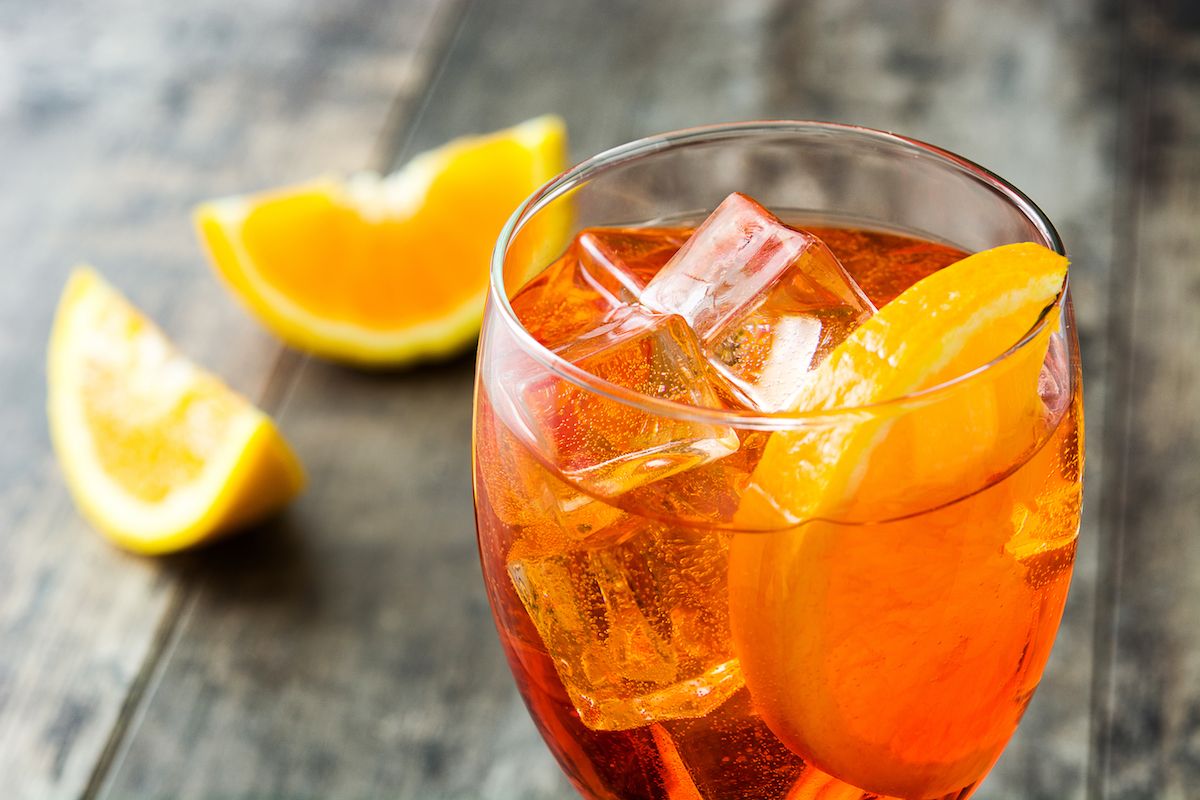The story and the recipe of the famous refreshing cocktail with a low alcohol content
Thinking of a light and refreshing drink to savor as an aperitif, nothing says Italy more than Spritz. With a name of German origins, the cocktail has become an icon of pleasant evenings spent with friends. Initially, it was quite different, but, in time, it evolved to include a bitter aperitif. Today, its standardized recipe is used all over the world.
Following the Napoleonic wars, the Austrian Empire took ownership of the Veneto region in northern Italy. Austrian soldiers, who were not used to the high alcohol content of the local wine, diluted it with a splash, or in German a “spritzer,” of water. As the cocktail evolved, the water turned into sparkling water and, later, soda water. While the still wine morphed into wine fortified with liquor. In Venice, at some point, the wine was substituted with Prosecco and the liquor with a bitter aperitif.
The secret to keeping the Aperol from sinking to the bottom of the glass is to fill the glass with ice, pour the Prosecco, then add the liquor and top with soda water
In the past few decades, the Campari Group, owner of Aperol, a semi-sweet, slightly bitter, 11-per cent-alcohol-by-volume aperitif, capitalized on the Spritz formula. They brought the Aperol Spritz to international fame, promoting it as the go-to drink at many events.
While Prosecco and soda water remain an important part, the bitter aperitif often is replaced with something else. However, to obtain a perfectly dry and refreshing cocktail, the Prosecco must be more than the semi-sweet liquor. Indeed, the classic formula is a simple 3:2:1 mix. That is three parts Prosecco, two parts Aperol, or other aperitif liquor, and one splash of soda water. The secret to keeping the Aperol from sinking to the bottom of the glass is to fill the glass with ice, pour the Prosecco, then add the liquor and top with soda water. Finally, garnish it with an organge slice, and you have Italy’s most popular cocktail.
Ilona Catani Scarlett

